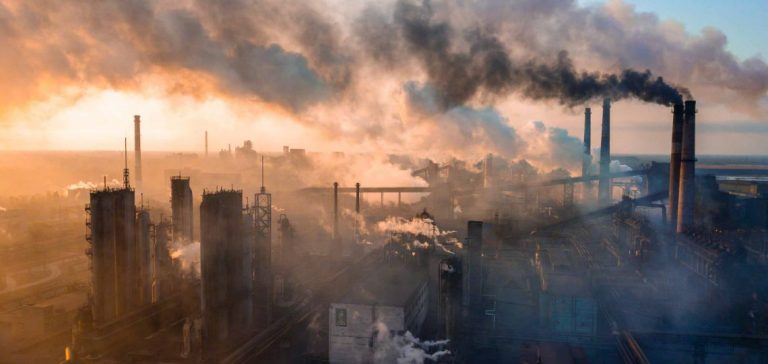If carbon dioxide (CO2) is the most well-known greenhouse gas, others less familiar to the general public play an important role in climate warming and are receiving increasing attention from researchers and policymakers. Thus, methane (CH4), nitrous oxide (N2O), and fluorinated gases also contribute to global warming.
CO2 accounts for about two-thirds of the warming attributable to greenhouse gases, summarizes Piers Forster, professor at the University of Leeds in the United Kingdom and author of the IPCC (Intergovernmental Panel on Climate Change), the expert group mandated by the UN. But other gases, starting with methane, also play an important role.
Methane
Methane (CH4) is the second greenhouse gas generated by human activities after CO2. About 40% of methane comes from natural sources, particularly in wetlands, but the majority (around 60%) is linked to human activities such as agriculture (ruminant livestock and rice cultivation), fossil fuels (natural gas is methane), and decomposing waste. Its warming potential is 84 to 87 times greater over 20 years than that of CO2, but its lifespan is shorter, making it an important lever to attempt to limit warming in the short term.
Reducing methane emissions “would have a strong cooling effect (or reduction in warming) in the short term because atmospheric methane concentrations would drop rapidly,” explains Mathijs Harmsen, researcher at the Netherlands Environmental Assessment Agency (PBL). “Policies should focus on the easiest and least costly measures, such as reducing natural gas leaks,” he suggests. For now, despite a global commitment to reduce emissions signed by many countries, including those of the EU and the United States, the trend is not positive. “Methane is increasing faster in relative terms than any other major greenhouse gas and is now at levels 2.6 times higher than pre-industrial times,” recently wrote an international team of scientists under the auspices of the Global Carbon Project.
Nitrous Oxide (N2O)
Nitrous oxide, or nitrous oxide (N2O), the third greenhouse gas, is nearly 300 times more powerful than CO2 over 100 years. It is primarily emitted by synthetic nitrogen fertilizers and manure used in agriculture. Other emissions come from human activities (chemical industry, wastewater, fossil fuels) or natural sources (soils, oceans). “Global human-origin emissions, dominated by nitrogen inputs on crops, have increased by 30% over the last four decades,” concluded a major study on the subject in Nature in 2020.
A solution lies in more efficient use of fertilizers. “Two-thirds of the climate change mitigation potential of N2O could be achieved by reducing fertilizers on just 20% of the world’s cultivated land, particularly in humid subtropical agricultural regions,” wrote French researcher Philippe Ciais in 2021.
Fluorinated Gases
Fluorinated greenhouse gases (PFCs, HFCs, and SF6) are powerful greenhouse gases found in refrigeration, heat pumps, air conditioners, or electrical grids. Even though they are used in very small quantities compared to others, they stand out for their very high warming potential: SF6, found in electrical transformers, has a greenhouse effect 24,000 times greater than CO2 over a 100-year period.
The Montreal Protocol (Canada), signed in 1987 and ratified by 195 countries, has already significantly reduced the quantity of another gas (CFC) that destroys the ozone layer in the atmosphere. In 2016, the Kigali Amendment also planned the gradual elimination of HFCs. Last year, the EU also concluded an agreement to progressively ban the sale of equipment containing fluorinated gases, particularly HFCs, to completely eliminate them by 2050.






















